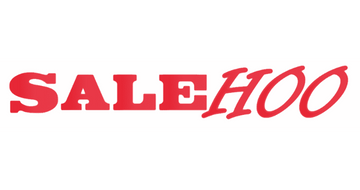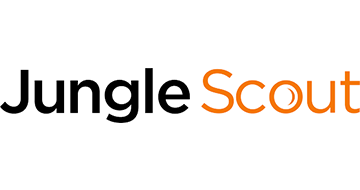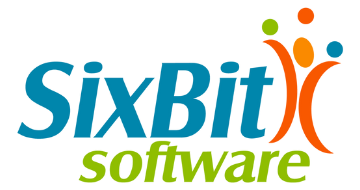The marketplaces in India are slowly becoming more popular. Currently, the largest online platforms are Amazon, Flipkart, Myntra, Snapdeal and Shopclues. As a global player, Amazon is by far the most popular marketplace in India, with more than 295 million visits every month.
Despite its size, India is still a small market for ecommerce. The revenue from online retail is around $46 billion annually, making up little more than 7% of total retail sales. Delivery networks are patchy and internet access can be slow, particularly in the rural majority of the country.
However, India is well positioned to be the next China in terms of both population size and economic development. India’s population, currently 1.38 billion, is expected to exceed China’s and become the world’s largest around 2027.
India’s demographics are more favorable than China’s, having a younger skew which will help to push economic growth for decades to come. It is currently the world’s sixth largest economy, but could become the third largest as early as 2026, behind only China and the US.
Best Research & Stocking Tools for Marketplaces in India
| Pricing | $27 / month |
|---|---|
| Pricing Model | Tiered Based |
| Free Trial | Yes |
| Free Version | No |
| Starting Pricing | 29$ / month |
|---|---|
| Pricing Model | Tiered Based |
| Free Trial | Yes |
| Free Version | No |
| Special Offer | Get 10% - 20% off right now |
|---|---|
| Pricing Model | Tiered Based |
| Free Trial | Yes |
| Free Version | Yes |
| Starting Pricing | 24.99 $ / month |
|---|---|
| Pricing Model | Tiered Based |
| Free Trial | Yes |
| Free Version | No |
| STARTING PRICE | From $10.99 per month |
|---|---|
| PRICING MODEL | Usage-Based |
| FREE TRIAL | 7 days |
| FREE VERSION | N/A |
As well as being the largest demographic group, younger Indians are more likely to shop online, speak English, and live in cities where delivery networks are well established. Against that backdrop, ecommerce in India is expected to grow by 30% each year and be worth $200 billion by 2026.
India is more open to Western businesses than China, but it does restrict foreign online retailers to a marketplace model with only third-party sellers. This makes marketplaces with their own retail operations, such as Amazon, easier to compete with in India than anywhere else in the world.
The largest online marketplaces in India
| # | Type | Name | Region/Country | Product Category | Indian Visits/month |
|---|---|---|---|---|---|
| 1 | Amazon | Global | General | 295.8M | |
| 2 | Flipkart | India | General | 167.4M | |
| 3 | Myntra | India | Fashion | 32.9M | |
| 4 | Snapdeal | India | General | 15.1M | |
| 5 | Shopclues | India | General | 5.9M | |
| 6 | Meesho | India | Fashion | 3.0M | |
| 7 | Pepperfry | India | Homewares | 2.5M | |
| 8 | Paytm Mall | India | General | 2.0M | |
| 9 | Limeroad | India | Fashion | 1.6M |
Amazon is the largest online marketplace in India, with 296 million visits per month. The only other marketplace on a similar scale is Walmart-owned Flipkart, with 167 million monthly visits.
On the next level down are Myntra and Snapdeal, with 33 million and 15 million visits per month respectively. Snapdeal is a marketplace for general merchandise, while Myntra sells mainly fashion.
The marketplaces in the lower half of the table have little more than 1% of Amazon and Flipkart’s traffic. They are wide-ranging marketplaces Shopclues and Paytm Mall, furniture marketplace Pepperfry, and fashion sellers Meesho and Limeroad, with between 1.6 million and 5.9 million monthly visits.
Amazon in India

| # | Country | Visits/month | % of Total |
|---|---|---|---|
| 1 | 2.0B | 38% | |
| 2 | 555.8M | 11% | |
| 3 | 407.0M | 8% | |
| 4 | 385.6M | 7% | |
| 5 | 295.8M | 6% | |
| Others | 1.6B | 30% |
India’s largest online marketplace is Amazon, with 296 million monthly visits. However, in the list of Amazon’s highest-traffic websites, India is down in fifth position with only 6% of the global total. This reflects the relatively low penetration of ecommerce in India overall.
Amazon first entered India in February 2012, with the launch of comparison-shopping site Junglee.com. It followed with the opening of Amazon.in in June 2013. Amazon’s growth in the country has been rapid despite regulatory and logistical challenges.
In terms of regulation, the Indian government has allowed foreign companies to operate online marketplaces in the country, but it does not want to see foreign online retailers competing for sales directly with Indian businesses.
At first, they stipulated that marketplaces could generate no more than 25% of their revenue from their own retail sales. This was later changed to prohibit sales by companies that are owned or controlled by the marketplace, effectively banning marketplaces from having any retail operations of their own.
These regulations were designed to protect India’s informal economy, much of which is cash-based and consists of small family-run businesses. Another side effect of India’s informal economy for Amazon was that recruiting sellers was difficult, as many companies preferred their traditional way of trading and believed ecommerce to be overly complex and time consuming.
However, Amazon signed up sellers through an educational program using mobile tea carts, that traveled to 31 cities and engaged with over 10,000 small businesses. Amazon built its own logistics system with fulfillment centers and local courier services collecting directly from sellers. Amazon now has 60 fulfillment centers across 15 states in India.
India is a very successful market for Amazon, and the company is in an ideal position to benefit from the exponential growth of ecommerce in the country. Amazon also has its largest office campus outside the US in the Indian city of Hyderabad, employing 62,000 staff. Amazon launched its Prime membership program in India in 2016, adding Prime Video later the same year.
Selling on Amazon India is not directly open to sellers based outside India. Brands will need to find a local distributor to sell on the marketplace. No products are currently available through the Amazon Global Store in India, although the service has operated there in the past.
| Build a thriving Amazon business today! Jungle Scout is the essential software that can help you win on Amazon and beyond. With Jungle Scout, you’ll have everything you need to make informed decisions about what products to sell on Amazon. You’ll be able to see exactly how well each product is selling, what the competition looks like, and how much profit you could potentially make. You can try Jungle Scout risk-free for 7 days. |

Try Jungle Scout risk-free for
7 days.
Flipkart in India

| # | Country | Visits/month | % of Total |
|---|---|---|---|
| 1 | 167.4M | 95% | |
| 2 | 2.3M | 1% | |
| Others | 7.3M | 4% |
Flipkart is the second largest online marketplace in India, with 167 million visits per month. It owns fashion marketplace Myntra, and is itself owned by Walmart.
Flipkart was founded in 2007 by two Indian entrepreneurs and former Amazon employees, Sachin Bansal and Binny Bansal. Like Amazon, the company initially focused on book sales then later expanded to sell a wide range of merchandise.
In 2014, Flipkart acquired fashion marketplace Myntra. Then in 2017, eBay entered into a partnership with Flipkart, licensing the eBay brand and investing $500 million in the company. Walmart acquired Flipkart for $15 billion in 2018, following a bidding war with Amazon, and eBay ended their partnership with Flipkart soon after.
Flipkart has developed a number of house brands including MarQ for large appliances, and SmartBuy for a wide range of electronics, tools and homewares. These are now sold by external companies including RetailNet, TBL Online and OmniTechRetail. Through its ownership by Walmart, Flipkart is subject to the same foreign investment rules as Amazon and cannot operate as a retailer itself.
While Walmart has been gaining online market share at an increasing pace in the US, it is only in India that Amazon and Walmart, via Flipkart, are really competing head-to-head.
As with Amazon, only Indian individuals and companies can sell on Flipkart. Manufacturers and brands from outside India will need to sell wholesale to local Indian companies.
Myntra in India

| # | Country | Visits/month | % of Total |
|---|---|---|---|
| 1 | 32.9M | 90% | |
| 2 | 1.5M | 4% | |
| Others | 2.0M | 6% |
Myntra, owned by Flipkart, is the third largest online marketplace in India and sells mainly fashion but also has a section for homewares. It is the only one of India’s large (top four) online marketplaces that sells a specific product category, rather than general merchandise.
Myntra was founded in 2007 and initially sold personalized merchandise to businesses, including products such as T-shirts and mouse mats. The site pivoted to fashion in 2011 and was acquired by Flipkart in 2014 for approximately $280 million.
Like many Indian marketplaces, Myntra generates most of its sales through its mobile app. In 2015, Myntra announced that it would shut down its website completely and sell only through its app. This resulted in a 10% drop in sales and the decision was reversed the following year.
Myntra has a “Try and Buy” service available in 31 cities, allowing customers to order multiple items and only pay for the ones they want after delivery has been made. It also has a loyalty program called “Myntra Insider” which features fashion advice, early access to product launches, and sessions with celebrity stylists.
Selling on Myntra is open to Indian retailers, brands and distributors. Seller information is given a low profile in product listings, with only the seller name shown and all contact directed through Myntra.
Snapdeal in India

| # | Country | Visits/month | % of Total |
|---|---|---|---|
| 1 |  India India | 15.1M | 83% |
| 2 | 875.0K | 5% | |
| Others | 2.3M | 12% |
Snapdeal is the fourth largest online marketplace in India, with 15 million monthly visits. It was originally founded in 2010 as a daily deals platform, similar in style to Groupon, but became a conventional online marketplace in 2011. Snapdeal still retains the image of a marketplace where low prices are the most important factor.
Snapdeal offers 35 million products from 300,000 sellers. It reported revenue of $126 million at the end of 2020 with losses of $38 million, apparently due to investments in video shopping and other marketing initiatives.
Snapdeal is a private business, with many investors including eBay and Alibaba and total funding of $1.8 billion. A merger with Flipkart was under consideration for a time in 2017, but ultimately fell through. Snapdeal has made a large number of acquisitions of its own, including companies providing logistics, payments and advertising services as well as online retailers.
Selling on Snapdeal is only open to Indian businesses. Sellers can order packaging material from Snapdeal, and schedule order collections directly through the site. A network of service providers help sellers take product photos and upload data.
Other online marketplaces in India

Shopclues, established in 2011, sells a wide range of products including mobile phones, fashion and homewares. It was acquired by Southeast Asian marketplace Qoo10 in 2019 and now has a global brands program through Qoo10’s Indian site. Shopclues has 5.9 million monthly visits.
Meesho is a fashion marketplace with 3 million visitors per month. It started in 2015 as FashNear, an app to buy fashion locally, but soon rebranded as Meesho. It has a social commerce model, encouraging user interaction and contributions via the mobile app, and also providing a platform to sell through Facebook, Instagram and other social networks.
Pepperfry, founded in 2011, is a specialist retailer and online marketplace selling furniture and homewares. It has six million registered users and 120,000 products, along with 42 showrooms and 22 warehouses across the country. Pepperfry has 2.5 million monthly visits.
Paytm Mall is the ecommerce arm of Indian financial company Paytm, which provides a range of payment services for both online and offline businesses. It was launched in 2017, and sells electronics, fashion, homewares, groceries and more. Paytm Mall has 140,000 sellers, a network of 17 fulfillment centers, and 2 million visits per month.
Limeroad is a fashion marketplace with 1.6 million visits per month. It was established in 2012 and has a social-driven shopping platform where users match multiple products to create “looks” and combine multiple looks into “scrapbooks”. They can then gain followers and likes and enter contests to win credit to spend on the site.
About the data
This article covers online marketplaces (either pure-play marketplaces or retailers with a third-party marketplace) with more than one million monthly visits from within India, based on data from SimilarWeb. A global list of online marketplaces, based on the same data, is available in The World’s Top Online Marketplaces.
We have excluded online retailers whose marketplace forms a very small part of their overall business, as well as marketplaces with a consumer-to-consumer model, and marketplaces with a very narrow product niche.





This is my first time pay a quick visit at here and i am really happy to read everthing at one place